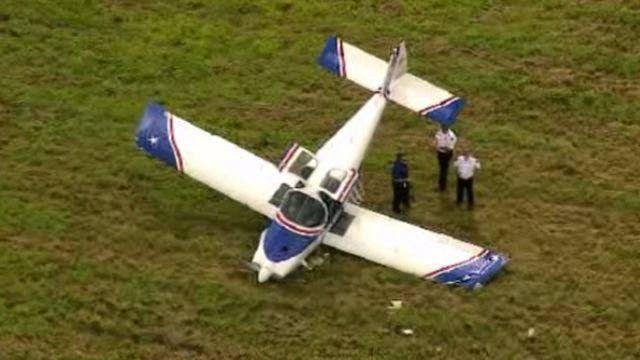Engine Failure after Take-off: Turn Back to the Runway or Land Straight Ahead?
- Garth Calitz
- Jun 29, 2022
- 4 min read
"The most important decisions you’ll ever make in an aircraft should be made before you enter the aircraft." If you haven’t previously thought through and decided what you’ll do if the engine quits on take-off, I encourage you to take a few minutes right now to think it through. After all, the life you save will be your own!


The instinct to turn back to the runway is powerful. If you rely upon just instinct, instead of...deciding ahead of time what you’ll do when the engine quits, your instinctive, gut decision may be the last one you ever make. There’s no shortage of accidents that demonstrate that pilots often make poor decisions upon encountering situations they haven’t thought through ahead of time. Few things are more tragic than a pilot, surrounded by fields and a golf course, who loses an engine at 400 feet, turns back to the runway and crashes and burns at the threshold.

One problem with relying on instincts in this situation is that the decision-making process required is the exact opposite of the learning conditioned into a pilot by hundreds or thousands of hours of flying experience. During most flights, 100% of our efforts are dedicated to returning the aircraft to the airport without a scratch. Why? Because scratches are expensive and nobody wants to spend money they don’t have to. Also, if the aircraft returns without a scratch, then we’ll surely arrive without one too.
But the situation is completely reversed when an engine quits shortly after take-off. In that case, it might not be immediately obvious which decision to make: land straight ahead or turn back to the airport. But like the Sirens of Greek mythology, the powerful call of the runway is hard to resist, after all, the runway has always been a safe harbour before and if you’re able to make it back, the runway holds out some possibility of returning the aircraft without a scratch. But wait, Stop! When the engine quits, your priorities MUST reverse. Now, you must think solely of saving yourself, even if it means totally destroying the aircraft in the process. That’s a tough decision to make if you haven’t thought about it in advance.

Human psychology seems to be biased toward preventing loss. Thus, pilots often incorrectly make a decision to turn back toward the runway because it MIGHT prevent a loss of money, even though failing to execute the manoeuvre may KILL the pilot! Instead, your focus needs to be on what you will GAIN from a correct decision.

is owned by the insurance company and there’s no reason you should risk your life to save the insurance company some money. In this case, a pilot should choose whatever decision will MAXIMISE the chance of their survival and totally disregard any damage to the aircraft that may occur. After all, when the engine quits, the aircraft

After the loss of a very close friend last year I took the time to speak to many experienced pilots with thousands of flying hours and I am convinced that the odds of making a successful return to the runway after a take-off engine failure are stacked against pilots. They advise not to even consider it unless they have gained about 1,000 feet of altitude and hopefully have departed from a long runway since they’re unlikely to make it back to a short runway unless they took off into a strong headwind. Instead, they should land more or less straight ahead. Sure they might turn perhaps 30° to avoid obstacles or to reach a better smoother touchdown area. But they shouldn’t be lured back to the runway unless they have a lot of altitudes. Even then, with a little headwind or a short runway, making it back may not be possible.

What's even sadder than having a pilot die while trying the impossible turn is having an instructor and a student die while practising the impossible turn at low altitude. I haven’t researched how often this happens, yet I’m aware of one fatal crash and one non-fatal crash that destroyed an aircraft, both of which happened within the last couple of years. In both cases, the aircraft took off from an airport, the power was pulled off to simulate an engine failure and the aircraft was turned back to the runway.

Many things get passed down in aviation, but that doesn’t mean that they are good ideas. This instructor taught his students to return to the field after an engine failure since that was how he was taught by his instructor. To his credit, he researched the issue after the accident and concluded that teaching the manoeuvre at low altitude was dangerous and made no sense. Primacy is a powerful force and we tend to rely more heavily on things we’ve learned first. In this case, he’s revised his view based on research something all pilots should be willing to do.
So if you’ve been taught to practice the Impossible Turn by departing an airport, cutting the engine and turning back to the field, I strongly encourage you to research the issue and discontinue doing it. If you’re an Instructor, please only do this by starting the manoeuvre a few thousand feet above an airport.
Please keep it safe out there


























Comments